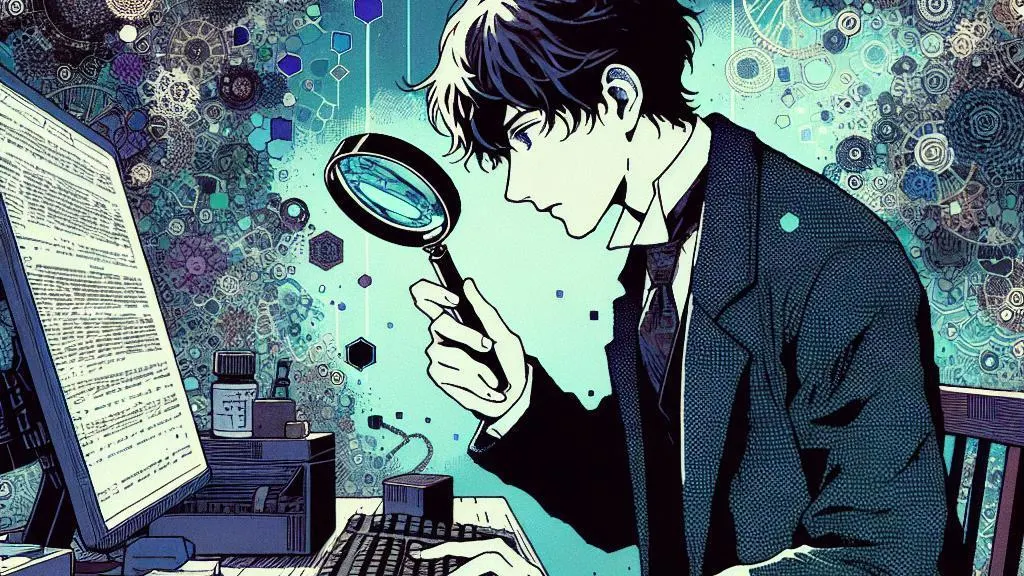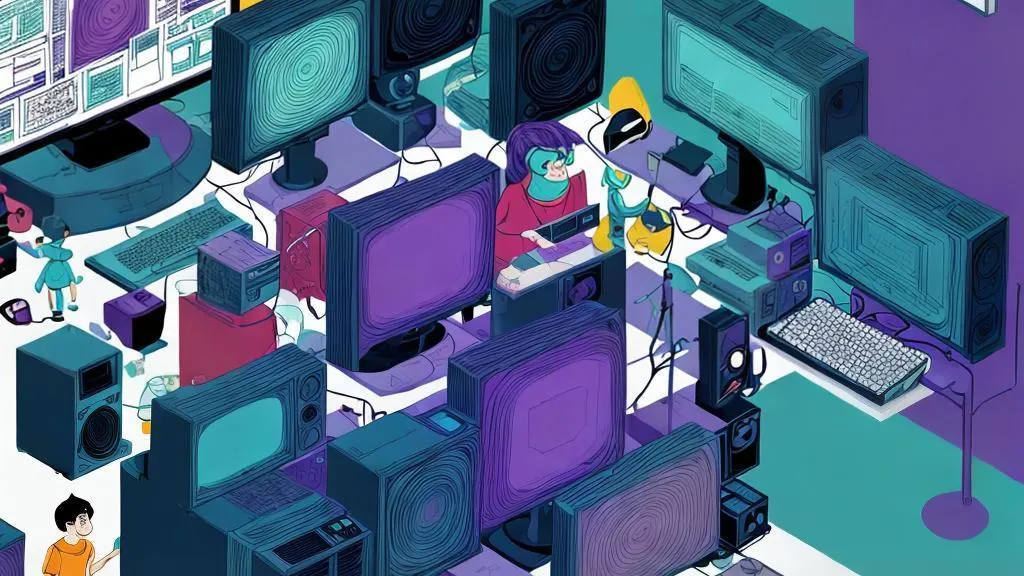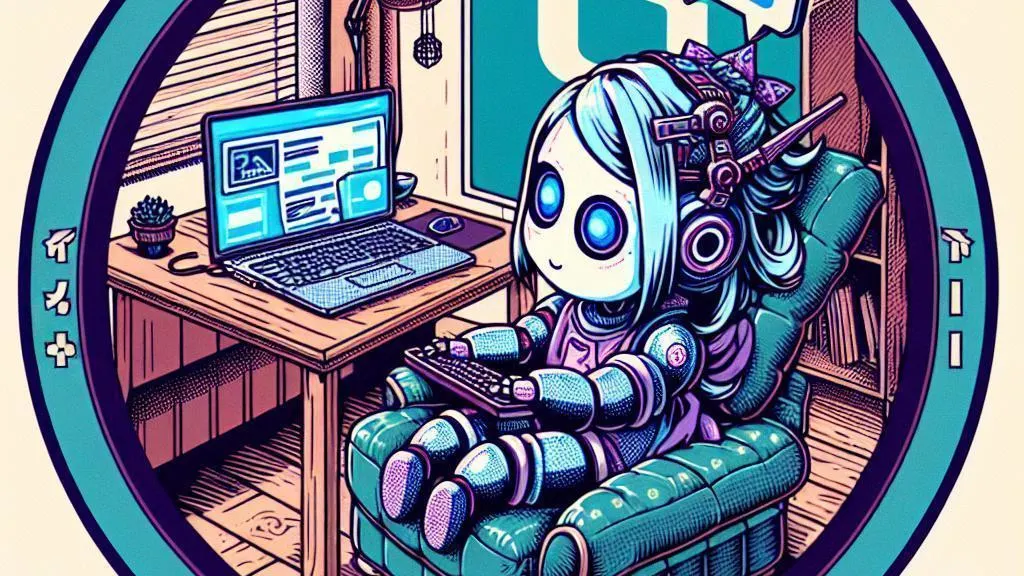How do you use ChatGPT
In an era where data is the new oil and artificial intelligence (AI) is the …

In recent years, the rise of artificial intelligence (AI) has revolutionized the way we create and consume visual content. AI-generated images have become increasingly sophisticated, making it difficult for the untrained eye to distinguish them from real photographs or human-created artwork. As these images become more prevalent in our daily lives, developing the skills necessary to detect them is crucial. This blog post will explore eight methods to help you spot AI-generated images and avoid being misled by their artificial nature.
One of the most telling signs of an AI-generated image is the presence of anomalies in its composition, lighting, or shadows. These irregularities can manifest in various ways, such as objects that appear floating or disconnected from their surroundings or shadows that do not align with the apparent light sources in the scene. For example, a person's shadow may be cast in a different direction than the shadows of nearby objects, indicating that the image has been artificially constructed.
Additionally, AI-generated images may contain abnormalities in depicting human or animal features. Pay close attention to hands and limbs, as AI systems often struggle to generate these complex structures accurately. You may notice extra fingers, arms, or legs, particularly in background figures of group scenes. These anomalies can be subtle, so examining images closely and comparing them to real-life examples is essential.

Another way to detect AI-generated images is by looking for inconsistencies in colours, textures, or patterns. While AI algorithms have become adept at creating visually appealing images, they may struggle to maintain consistency throughout the composition. For instance, you may notice that the colour of an object changes slightly from one part of the image to another or that the texture of a surface appears distorted or unnatural in certain areas.
Inconsistencies in symmetry can also be a giveaway of an AI-generated image. Human creators tend to pay close attention to details such as matching earrings, evenly placed cutlery or balanced architectural features. However, AI systems may overlook these subtle elements, resulting in mismatched or asymmetrical objects within the image.
AI-generated images often contain repeated elements like identical objects, patterns, or textures. This is because AI algorithms learn from vast datasets of existing pictures and may inadvertently incorporate similar features into their creations. When examining an image, look for instances where the same object or pattern appears multiple times in different composition parts.
Repeated elements are particularly noticeable in fabrics and textures. AI systems may struggle to generate unique, organic textures, resulting in patterns that appear too uniform or repetitive. By comparing the textures in an image to those found in real-life objects or human-created artwork, you can often distinguish between genuine and artificial images.
AI-generated images may depict humans or animals in unnatural poses or with impossible movements. While AI algorithms have become increasingly sophisticated in generating realistic images, they may still struggle to capture the nuances of human and animal anatomy. As a result, you may encounter images where the subjects appear to be contorted in awkward or physically implausible ways.
To detect these unnatural poses or movements, compare the image to your understanding of real-life body mechanics. Ask yourself if a human or animal could realistically achieve the pose or movement depicted in the picture. If the answer is no, there is a good chance that an AI system has generated the image.

Another indicator of an AI-generated image is the subjects' lack of genuine emotion or expression. While AI algorithms can generate faces that appear human-like, they often struggle to capture the subtle nuances of human emotion. As a result, the subjects in AI-generated images may have blank stares, stiff poses, or unnatural facial expressions.
To spot this lack of emotion or expression, pay close attention to the eyes and facial features of the subjects in the image. In genuine photographs or artwork, the subjects' eyes often convey a sense of depth, emotion, and connection with the viewer. In contrast, the eyes in AI-generated images may appear flat, lifeless, or disconnected from the rest of the facial expression.
AI-generated images may be created using tools or techniques that human artists or photographers do not commonly employ. These unusual methods can sometimes leave telltale signs in the final image, such as unexpected brush strokes, textures, or shading.
To identify these unfamiliar tools or techniques, compare the image to traditional artwork or photography examples. Look for elements that seem out of place or inconsistent with the medium used. For example, an AI-generated painting may feature brush strokes that are too uniform or lack the organic variation found in human-created work.
Metadata analysis is a more technical approach to detecting AI-generated images. Every digital image contains metadata, which is information about the image's creation, such as the date, camera settings, and software used. By examining this metadata, you can sometimes determine whether an AI system has generated an image.
To perform metadata analysis, you must use specialized software or online tools to extract and interpret the metadata from an image file. Look for inconsistencies or anomalies in the metadata, such as creation dates that do not align with the supposed origin of the image or camera settings that are impossible with real-world equipment.
Reverse image search is another powerful tool for detecting AI-generated images. This technique involves searching the internet for visually similar images to determine whether an AI has generated the image in question or if it exists elsewhere online.
Upload the image to a search engine like Google Images or TinEye to perform a reverse image search. These search engines will scour the internet for visually similar images and provide a list of results. If the image appears on multiple websites or in different contexts, it is more likely to be a genuine photograph or artwork. However, if the image does not appear anywhere else online or only on websites discussing AI-generated content, it is more likely that an AI system has created it.
As AI-generated images become increasingly prevalent daily, we develop the skills necessary to detect them. B is essentially being aware of the eight methods outlined in this blog post – anomalies in the image, inconsistencies, repeated elements, unnatural poses or movements, lack of emotion or expression, use of unfamiliar tools or techniques, metadata analysis, and reverse image search – you can become a more discerning consumer of visual content.
Remember, the key to detecting AI-generated images is to remain vigilant and trust your instincts. If an image seems questionable or too good to be true, it is always worth looking closer. By combining the techniques discussed in this post with a critical eye and a healthy dose of skescepticismou, you can navigate the increasingly complex world of visual media to avoid being misled by artificial content.
Finally, it is essential to recognize that detecting-generated images is an ongoing process. As AI technologies advance and evolve, so must our methods for identifying their creations. By staying informed about the latest developments in AI-generated content and continually refining your detection skills, you can remain one step ahead of the artificial and ensure that you are constantly consuming genuine, human-created visual content.
Some other posts you may like

How do you use ChatGPT
In an era where data is the new oil and artificial intelligence (AI) is the …
June 18, 2024
Read More
Using ChatGPT to create blog posts fast, and customGPT actions to automatically post them to your Wordpress website.
As we tread further into an era of technological wizardry, crafting and curating content has …
June 18, 2024
Read More